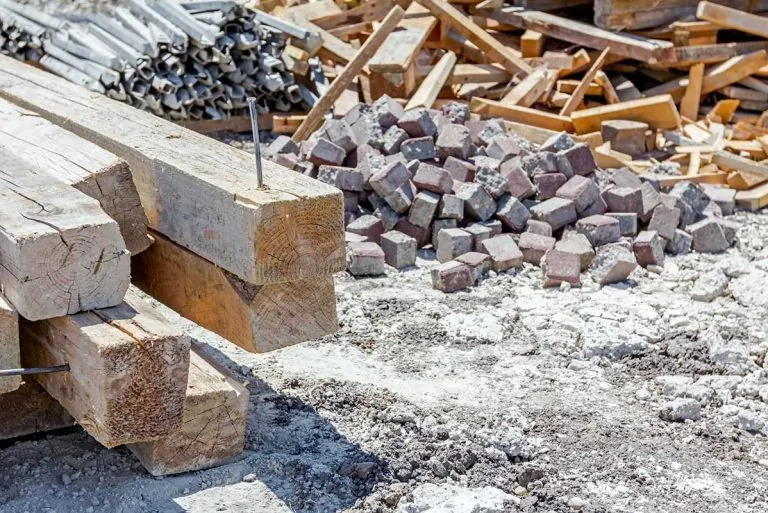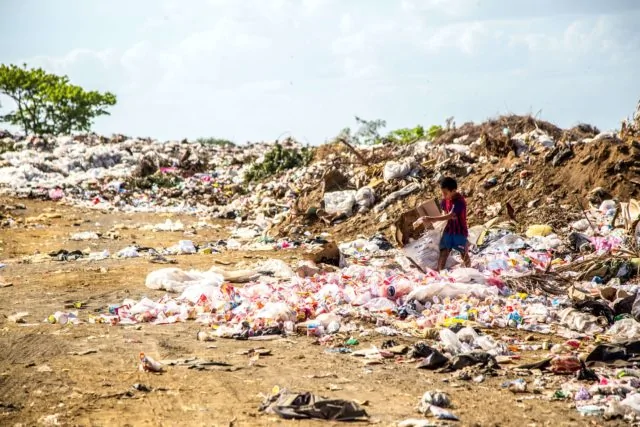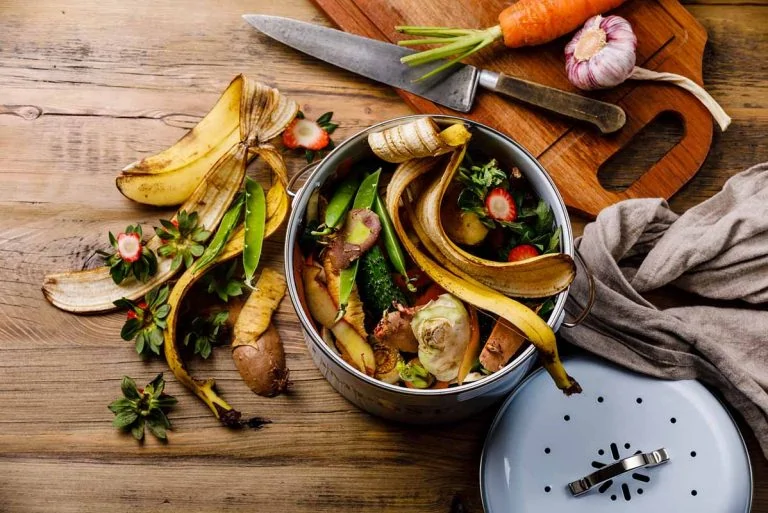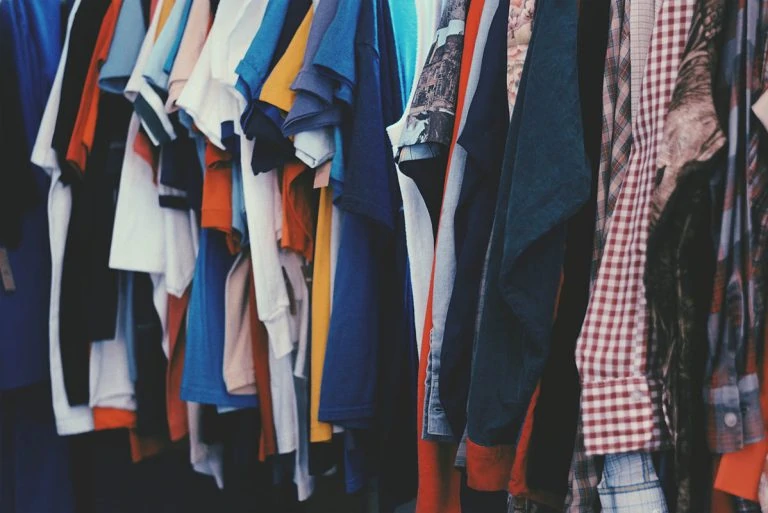You may think that no matter how hard you try to live an eco-conscious life, some things are a necessary evil that cannot be avoided, like toilet paper. You’ll be shocked (and happy) to learn that you can buy zero waste toilet paper to help minimize your impact on the environment.
Zero waste toilet paper: our top picks
Thankfully, there are alternatives to regular toilet paper that relies on non-sustainable wood pulp and is bleached with chlorine. In fact, there is a range of options when it comes to zero waste toilet paper: here are our eight top picks!
1. Marcal 100% Recycled Bath Tissue
This toilet paper from eco-friendly brand Marcal is made from 100% recycled paper. It is also whitened without chlorine bleach, dyes or fragrances, so doesn’t use chemicals that can be harmful to the environment.
What we like:
- 2-ply, perforated and embossed sheets – making this toilet tissue strong, soft and absorbent.
- Sustainable – the rolls are made from 100% recycled content and wrapped in paper, so there’s no plastic waste.
- Free from bleach, chemicals, dyes, or fragrances – so is not only better for the environment, but this toilet paper is also hypoallergenic.
What we don’t like:
- Only available by the case – with 48 rolls, this bulk purchase will take up a fair amount of storage space.
This product not only meets but exceeds EPA guidelines for post-consumer recycled content and is Green Seal certified. You can therefore be confident that it is safe for your health, as well as for the environment.
2. Pure Planet Bamboo and Sugarcane Toilet Tissue
Pure Planet’s toilet tissue is “tree-free” as it is made from renewable bamboo and sugarcane fibers. Not only are these plant-based materials more sustainable than toilet paper made from wood pulp, but they are also fully recyclable and biodegradable.
What we like:
- Long and strong – each roll is 3-ply for extra strength and double length, so you don’t need to worry about running out of paper.
- Plastic-free – the rolls are wrapped in paper to eliminate plastic waste.
What we don’t like:
- Bleached – although bleached with comparatively-less harmful chlorine dioxide, chemicals are used in the manufacturing process.
The bamboo and sugarcane this product is made from is not only renewable, but Pure Planet only uses waste material from the manufacturing industry. This sustainable toilet tissue is also septic safe and RV safe, so you can use it in virtually any system while protecting the planet!
3. Natural Value 100% Recycled Bathroom Tissue
Natural Value’s toilet tissue is not only 100% recycled, but the brand also guarantees that their products are a minimum of 80% post-consumer recycled content. Not only is the toilet paper sustainable, but it comes wrapped in paper too, meaning no plastic packaging!
What we like:
- Recycled – the toilet tissue is made from majority post-consumer recycled content that is 100% recycled.
- Bleach and chemical-free – no bleach, dyes, inks or fragrances are used in production, so this product is all-natural.
What we don’t like:
- Price – some online reviewers note that the brand has recently substantially increased the price of this product.
We particularly like that this recycled toilet paper is made in the USA, meaning that you can rest assured that it doesn’t come with a load of carbon miles, as well as supporting the local economy.
4. Bumkins Reusable Flannel Baby Wipes and Wet Bag
Reusable wipes are arguably the most zero-waste option when it comes to toilet paper, as they involve no disposable waste at all. These flannel baby wipes make a good toilet paper alternative that can be washed and reused.
Use the wipes with Bumkins’ waterproof wet bag to keep the wipes hygienically stored until you wash them.
What we like:
- Unbleached cotton wipes – the wipes are made from soft and natural, 100% unbleached cotton.
- Polyester wet bag – the wet bag is 100% polyester, embedded with waterproof coating to keep mess and odors inside the bag, without layers of fabric that can foster bacterial or fungal growth.
What we don’t like:
- Takes some getting used to – moving to reusable wipes or a “family cloth” can be a big change from regular toilet paper.
Bumkins’ flannel wipes are soft and lightweight, making them perfect not only for baby wipes, but for adults too! Although a big transition, using these wipes in combination with a wet bag is a truly zero waste solution.
5. Kitchen + Home Reusable Bamboo Towels
Although designed to be used in the kitchen, these are another reusable option that you can also use in the toilet. Not only are these towels washable, they are also made from sustainable, organic – so they are an eco-friendly win-win!
What we like:
- Bamboo – the towels are made from bamboo from a sustainable, certified organic source, and this material is also strong, durable, and absorbent.
- Machine washable – they can also be washed and reused up to 120 times, according to the manufacturer.
What we don’t like:
- Limited uses – some online reviews say these towels start to show signs of wear after a few washes.
Bamboo is one of the most sustainable materials in the world, being renewable, fast-growing, and needing no chemicals and little water to grow. You’ll be helping the environment with towels made from a sustainable material, if you reuse them, all the better!
6. No. 2 Bamboo Toilet Paper
Another product made from sustainable bamboo, No. 2’s three-ply toilet paper is strong and won’t tear easily. The paper is 100% recyclable, and it comes wrapped in recycled paper packaging.
What we like:
- All-natural ingredients – all components are sustainable, from the bamboo toilet paper to the recycled packaging that is printed with soybean ink.
- Clog free – this paper can be used in a range of different systems, including septic tanks and RVs.
What we don’t like:
- Not the softest – some reviewers report that this paper is one the rougher side.
No. 2’s toilet paper is a strong and hardy toilet paper made from entirely sustainable ingredients. Like many tree-free and recycled options, it is only available in bulk quantities, but being sold as a set of 24 rolls, this is more manageable than most.
7. Seventh Generation 100% Recycled Bathroom Tissue
This is another sustainable toilet paper option made from 100% recycled paper. The rolls are individually-wrapped in paper that is 100% recyclable.
What we like:
- Sustainable – the toilet paper is made from 100% paper with no dyes, inks, or fragrances, as well as being whitened without chlorine.
- Long rolls – each roll is 1000 sheets long, so won’t run out too soon.
What we don’t like:
- One-ply – the paper may not be as strong as two-ply or three-ply products.
Made from recycled paper and packed in recyclable paper, this toilet paper is compatible with low flow toilets and is septic safe.
8. TUSHY Bidet Attachment
Although not toilet paper, a bidet attachment is a fantastic, zero-waste alternative to toilet paper. You can easily install this affordable attachment from TUSHY in around ten minutes, without the need for electrical hook ups or additional plumbing
What we like:
- Toilet-paper alternative – replace toilet paper completely, or use the bidet in combination with a sustainable toilet tissue and greatly reduce your consumption.
- Adjustable – you can adjust the nozzle and pressure according to your preference.
What we don’t like:
- May not fit all toilets – some online reviewers report that this adjustable bidet doesn’t fit well on their toilet, so be sure to check the specifications.
TUSHY’s bidet attachment is a great option for anyone looking to reduce their toilet paper usage or ditch it altogether without having to install a full bidet.
Why should you switch to zero waste toilet paper?
One of the major problems with toilet paper is deforestation and forest degradation: the simple fact is that every time you flush paper down the toilet, you’re flushing part of a tree.
The average American uses 141 toilet rolls a year, which means destroying a lot of trees to produce those rolls.
Regular toilet paper is typically made from wood pulp, an industry that is driving deforestation around the world.
Most wood pulp in the US comes from Canadian boreal forest, where ancient trees are cut down to make toilet paper, printer paper, and facial tissues. This destroys the habitats of wildlife like songbirds and caribou, as well as the traditional homes of indigenous communities.

Source: Wikimedia / peupleloup
Destroying the boreal and other forests to make wood pulp also contributes to climate change, as these forests represent important carbon storage and soaking up greenhouse gases. In fact, the Nature Conservancy describes Canada’s boreal forest as “the Earth’s largest terrestrial carbon sink”.
Therefore, destroying these forests to make toilet paper will likely accelerate the rate of climate change, when we should be going in the opposite direction!
As well as the wood pulp, a lot of water is used to make toilet paper, using up another of the earth’s precious natural resources. Over 400 billion gallons of water is used to make the USA’s toilet supply every year, not to mention 253,000 tons of chlorine to bleach it.
Additionally, regular toilet paper is usually packaged in non-recyclable plastic that will clog up landfill for decades, if it doesn’t make its way into our rivers and oceans instead.
What exactly is ‘zero waste’ toilet paper?
Going sustainable will your toilet paper can be confusing because of the range of different solutions. There are a number of vastly different options to replace regular, non-sustainable toilet paper.
Sustainable toilet paper
The most recognizable alternatives are sustainable, eco-friendly types of toilet paper such as:
- Recycled – contains recycled content that reduces the product’s environmental impact by avoiding tree pulp. Recycled toilet paper is usually made from either post-consumer paper waste or scraps or offcuts from other paper products. It’s best to look for paper that is 100% recycled and unbleached.
- Tree-free – is made from sustainable sources such as bamboo, sugarcane, bagasse, or eucalyptus. The fast-growing nature of these plants makes them renewable, and avoids destroying or degrading virgin forest. This type of toilet paper tends to be softer and stronger than products made from recycled content
- Recyclable – of course, you can’t recycle the toilet paper itself, but what about the packaging it comes in? Zero-waste products should come in recyclable or biodegradable packaging, such as paper, or plastic that can be recycled. This is important to eliminate waste from the entire product cycle.
Family cloth
You can also choose to avoid tissues altogether. One way to do this is by using a so-called ‘family cloth’, a similar principle to cloth diapers.
Don’t be alarmed by the name, which is a little misleading. This isn’t a cloth used by the whole family, but rather a set of cloths for individual use.
These are essentially a set of reusable fabric swatches. After use, the swatches can be washed and then reused – we’ll discuss how exactly to use these in the FAQs section below.
Bidet attachment
Another option that eliminates the need for toilet paper of any kind is by using some variation on a bidet. In many cultures, it is normal to use a bidet or similar instead of toilet paper.
If you’re not familiar with a bidet, this is a toilet-like fixture that shoots jets of water to clean the intimate parts of your body.
This doesn’t have to mean redesigning your bathroom to include a full-sized bidet. A bidet attachment can be attached to your regular toilet and works in much the same way as a bidet.
These are generally very easy to install yourself and don’t use any electricity.
A similar principle is a hand-held squirt gun that attaches to your toilet and works in basically the same way as a bidet attachment. These have long been used in Asia and the Middle East.
You could even use a regular squirt bottle in the same way.
Many eco-conscious consumers like to use a bidet attachment in combination with other sustainable toilet paper options. This can be used to reduce the “ick” factor associated with a family cloth, or to reduce your toilet paper usage.
By only using toilet paper to dry off post-bidet, you should reduce the amount of tissue you need to use by more than half.
What to look for in a zero waste toilet paper product
When buying any zero waste toilet paper, it is important to consider a number of factors, from the materials they’re made from to the packaging it comes in.
Materials
One of the key considerations when buying zero-waste toilet paper is the materials it is made from. Eco-friendly toilet paper materials include recycled paper, as well as sustainable plants such as bamboo or sugarcane. You can even find toilet paper made from hemp, which is a great eco-friendly option as well.
Of course, even products made from sustainable materials like bamboo or recycled paper are not “zero-waste” in the literal sense, though they are eco-friendly. The only true zero-waste toilet paper are reusable wipes such as a family cloth.
Packaging
It is important to consider both the toilet paper itself, and the packaging it comes in (including the outer packaging it is shipped in). Regular toilet paper is typically wrapped in plastic, but the best zero-waste products come packaged in recycled and/or recyclable paper.
Chemicals
Regular toilet paper is typically bleached with chemicals (usually chlorine), as well as frequently being treated with dyes and chemical fragrances. These can all have devastating impacts on the environment, and may not be fantastic for your health, either.
When buying zero-waste toilet paper, you should check whether any chemicals have been used in the production process.
Sustainable Toilet Paper FAQs
In case you still have doubts about zero-waste toilet paper, we’ve addressed some of the most frequently asked questions on the subject.
What’s the difference between recycled toilet paper and reusable toilet paper?
Recycled toilet paper is similar to regular toilet paper; the key difference is that it is made from recycled paper rather than virgin wood pulp.
Therefore, this is not strictly zero-waste, as the paper is still flushed down the toilet. However, recycled products eliminate many of the environmental concerns associated with regular toilet paper, such as the use of virgin wood pulp that causes deforestation.
On the other hand, reusable toilet paper is a piece of cloth that can be washed and used over and over again. In this way, it is truly zero-waste.
Is reusable toilet paper safe to use?
As long as you use it properly – absolutely! The main risk with reusable toilet paper is that it may spread bacteria if not cleaned well. As long as you store and wash it thoroughly (see below), this will not be an issue.
How do you use reusable toilet paper?
To use a family cloth or another type of reusable toilet paper, hang a set of clean cloths next to the toilet. Once used, put the dirty cloth in a “wet bag”: a sealed, waterproof bag that will contain the dirty wipes, odors, and bacteria until you wash them.
You can then put the contents in the washing machine to clean it before using it again. It is best to wash on a very hot setting to kill germs and bacteria.
Final thoughts
There is quite a bit of debate over which zero waste toilet paper is best. At the end of the day, there is no right or wrong answer, as it really comes down to personal preference.
When trying to live an eco-friendly lifestyle, it is important to take small, achievable steps. You could start by buying recycled or tree-free toilet paper, and work up to a completely zero-waste bidet and/or family cloth solution!
If you’ve found this a helpful round up of zero waste toilet paper, go ahead and share it on social media to spread the world about living a more eco-friendly lifestyle.





















